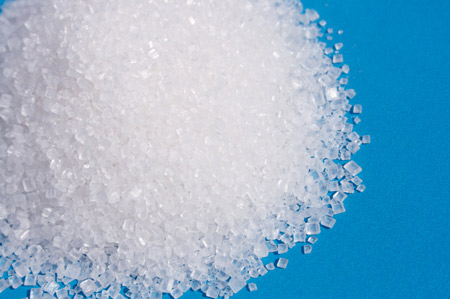Sugar: Supplies bursting at the seam, or are they?
Category: Sugar
 (Futures Mag) – Sugar prices have fallen to two-and-a-half year lows amid forecasts for an ever expanding 2012-13 global production/consumption surplus. The International Sugar Organization (ISO) has been revising its forecast higher, with its current estimate at 6.2 million tonnes, but some estimates are more than double that figure, at more than 12 million tonnes.
(Futures Mag) – Sugar prices have fallen to two-and-a-half year lows amid forecasts for an ever expanding 2012-13 global production/consumption surplus. The International Sugar Organization (ISO) has been revising its forecast higher, with its current estimate at 6.2 million tonnes, but some estimates are more than double that figure, at more than 12 million tonnes.
The Brazilian crop staged a dramatic midseason recovery. At one point it seemed that production would fall behind 2011-12 output, but the weather improved. Thus far, Center South output is running about 9% higher than the previous season’s. Quite a turnaround.
Estimates for Indian output have edged slightly higher, to 24.3 million tonnes. After liberalizing the export market, exporters shipped 3.5 million tonnes in 2011-12. Export flows were expected to continue, but there has been very little activity on that front this marketing year. That is probably further indication that supplies from traditional channels are ample.
In terms of the supply side, there seems to be more of the same up ahead. Early forecasts for the 2013-14 Brazilian cane crop call for a 10% increase over the current crop. At first glance that would appear to be devastatingly bearish. There are a number of factors to consider, though.
The ethanol/sugar ratio has fallen substantially from a peak of more than 60% a few years ago to 51% this year. There are two reasons Brazilians will be forced to produce more ethanol in the coming months and throughout the new marketing year. First, the percentage of ethanol required to be used by motorists is set to increase from 20% to 25% by June 1 or earlier. Then there is the export market to consider.
In our last article on sugar, we said that optimistic estimates for Brazilian ethanol exports for 2012-13 were as high as 2.55 billion liters. That figure has now jumped to 3 billion liters, with forecasts for 2013-14 as high as 4 billion liters.
Forecasts for the 2013-14 ethanol/sugar ratio are as high as 54%. With the U.S. taking about 85% of Brazilian ethanol exports and ethanol prices becoming more competitive with petroleum prices as crude oil moves dangerously close to $100 per barrel, it is hard to say how much ethanol demand may grow.
Another issue that we’ve pointed to over the past few months has been the rising cost of sugar production, which presumably will make processors very keen on switching to ethanol — that is, if ethanol provides a better return on investment. One Brazilian sugar analyst says that production costs for sugar have risen to 21¢ per pound! The math is easy…at current prices processors are losing money. The analyst expects costs to ease if the cane crop is as large as expected in 2013-14, because it is idle milling capacity that increases average costs. Still, most people will be surprised to learn that the industry has been operating at a loss.
Sugar open interest has skyrocketed as trend-following funds and individual speculators continue to build a mammoth short position. Chart 2 shows that open interest is up 165,000 contracts, or 25% since this leg of the downdraft began in October. In addition, the chart also shows that speculators hold a net-short position of 73,000 contracts, the largest short position since 2006.
There is no argument with the bearish case presented by the global balance sheet. Down the road, however, it is hard to see sugar production continuing to rise in Brazil if there is a strong shift to more ethanol output. Even with current estimates for modest increases in the ethanol/sugar ratio, an abundant cane crop may not accommodate any increase in sugar production.
We were stopped out of our long-held long position at 18.50¢ per pound. We still believe that the market is oversold and that would be reinforced if the market fails to make even lower lows while not shedding a meaningful amount of open interest. As an alternative to jumping back into the market, we recommend buying call options. At present, they carry a very low implied volatility of 17%. That compares with historic volatility, which even recently has been 20% and much higher in the past. Buy July 19 calls.




